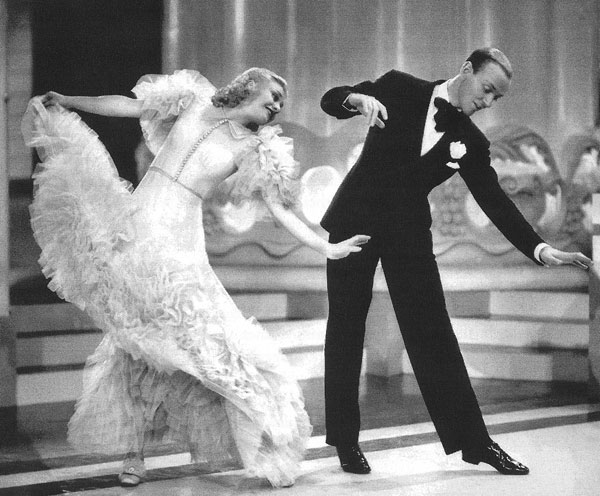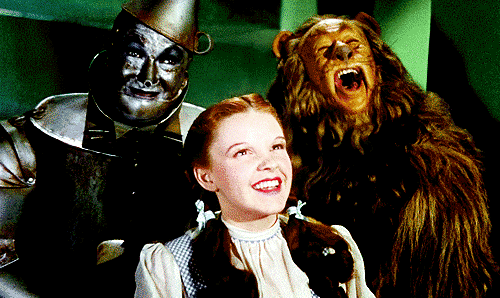Swing Time: Dance and Money Motifs

I will admit that I thoroughly enjoyed watching Swing Time (George Stevens, 1936) as I love watching dance performances and specifically, swing dancing.
Due to my personal experience with dance, I paid close attention to the way choreography was integrated into the plotline and how elements of mise-en-scène, including costume and setting, emphasized each number. I also noticed the thematic motif of money throughout the film, as each character’s role seemed to relate to money or gambling.
Each number of the film between Penny Carroll (Ginger Rogers) and Lucky Garnett (Fred Astaire) seemed fluid and defiant of gravity, which reiterated the strong romantic connection between the two characters that viewers were supposed to recognize. This is most apparent when contrasted with the much less eloquent dance of Lucky’s pal Pop (Victor Moore) and Penny’s coworker Mabel (Helen Broderick) during the scene in which Lucky and Penny dance to get Penny’s job back. While Penny and Lucky integrate barriers and boundaries into their dance, Pop and Mabel break the small fence structure in the same dance studio and stumble while dancing. The seemingly effortless synchronization of Penny and Lucky, along with the gorgeous movement of the dances captured fully by the long duration camera shots, created a magical destined-to-be-together effect. The costumes of Penny, including the flowy dresses with fitted tops and an occasional cape added to this magic and gravity-defiance. The settings throughout the film also appeared to be made for the purpose of dance, as there were many reflective surfaces and mostly stages.
One thing I noticed was how there was not only a love for dance showcased in the film, but dance also represented love through the synchronization of dance partners. The very beginning of the film featured a dance routine between Lucky and his dance team of men who clearly loved what they were doing—and who apparently thought it was more important than Lucky’s marriage since they sabotaged his timely attendance to his own wedding. This marriage also introduced the motif of money through the requirement of a $25000 salary by Lucky in order to marry Margaret Watson (Betty Furness). The motif remained throughout the film through Lucky’s gambling addiction, the obsession with a lucky quarter that led him to develop a relationship with Penny (whose name in itself contributes to the motif), and the income Lucky was willing to accept in order to stay in New York. I find it interesting that money is what separated Lucky from his prior engagement to Margaret, yet it is what brought him together with his true love and dance partner-Penny. Perhaps there is also a double meaning in this name given Lucky’s addiction to gambling (or love for money) throughout the film and love for “Penny”.




